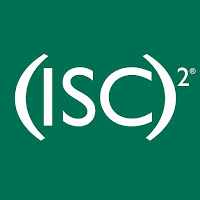Industry leaders set cloud computing security benchmarks
Security has long been the No. 1 cloud computing business concern. Although the apprehension is absolutely valid, cloud computing business decision and strategies are all too often driven by the many broadly shared misconceptions and misunderstandings. They include:
- Public cloud is more easily breached that a private cloud
- Any infrastructure that you manage or own is more secure than any cloud computing infrastructure
- Cloud-hosted applications are technically no different than enterprise-hosted applications
- The cloud service provider infrastructure and personnel will address and remediate all security issues
- The end user has very little control over cloud security
- A corporate network provides protection even when using cloud apps
- Cloud platforms lack security features and cloud providers offer no visibility into their platform
- Strong authentication mechanisms are sufficient for ensuring security
These troubling facts are why I was thrilled last month when cloud computing security industry leaders Cloud Security Alliance (CSA) and the International Information System Security Certification Consortium ((ISC)²) addressed this issue head-on by collaborating on the development and release of the Certified Cloud Security Professional (CCSP) Certification Program. Both nonprofits, their individual missions and goals are synergistic:
CSA: To promote best practices for providing security assurance within cloud computing and provide education on the uses of cloud computing to help secure all other forms of computing.
(ISC)²: To support and provide members and constituents with credentials, resources, and leadership to secure information and deliver value to society.
By stepping up to the challenge of cloud security certification, these organizations are explicitly addressing their missions.
Vendors are also stepping up. According to a recent CRN article, commercial cloud security platforms are helping enterprises mitigate the risks of using cloud-based applications and services. These offering are providing strong data protection capabilities by incorporating data loss prevention, data encryption and tokenization. Some cloud security companies provide identity and access
management capabilities while others monitor cloud-based systems for suspicious activity and provide policy enforcement, reporting and alerting capabilities. Cloud-based sandbox environments for controlling employee laptops, smartphones and tablets, regardless of their location, are in the marketplace as well.
A specific example of strong industry cloud security capabilities is Dell SecureWorks. It is positioned in the Leader’s Quadrant of Gartner’s Magic Quadrant for Global Managed Security Service Providers. In April 2015, the Info Security Products Guide recognized the company by announcing Dell as the Grand Trophy Winner as well as the winner of 12 additional awards, including one in cloud security for the Dell Cloud Access Manager.
The CCSP credential was designed to reflect the holder’s deep knowledge of cloud computing security. In order to gain this certification, a candidate must demonstrate hands-on information security and cloud computing experience. Certification requires a minimum of five years of cumulative, paid, full-time information technology experience, of which three years must be in information security and one year in one of six domains of the CCSP examination. It also requires:
- Passing an exam;
- A legal commitment to the code of ethics;
- Endorsement from an appropriate certified professional; and a
- Commitment to continuing professional education.
This post was written as part of the Dell Insight Partners program, which provides news and analysis about the evolving world of tech. Dell sponsored this article, but the opinions are my own and don’t necessarily represent Dell’s positions or strategies.
( Thank you. If you enjoyed this article, get free updates by email or RSS - © Copyright Kevin L. Jackson 2015)














